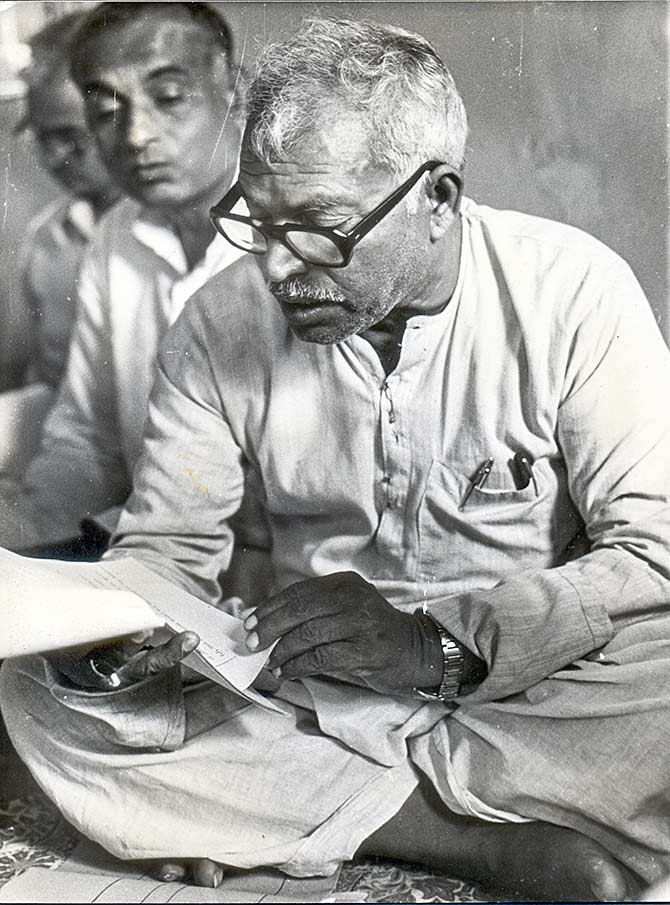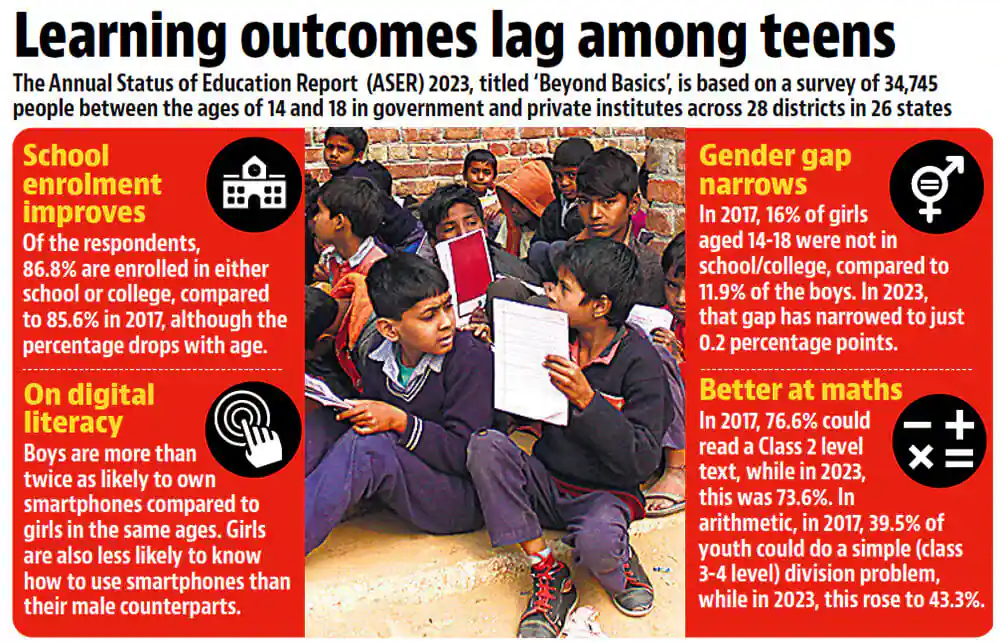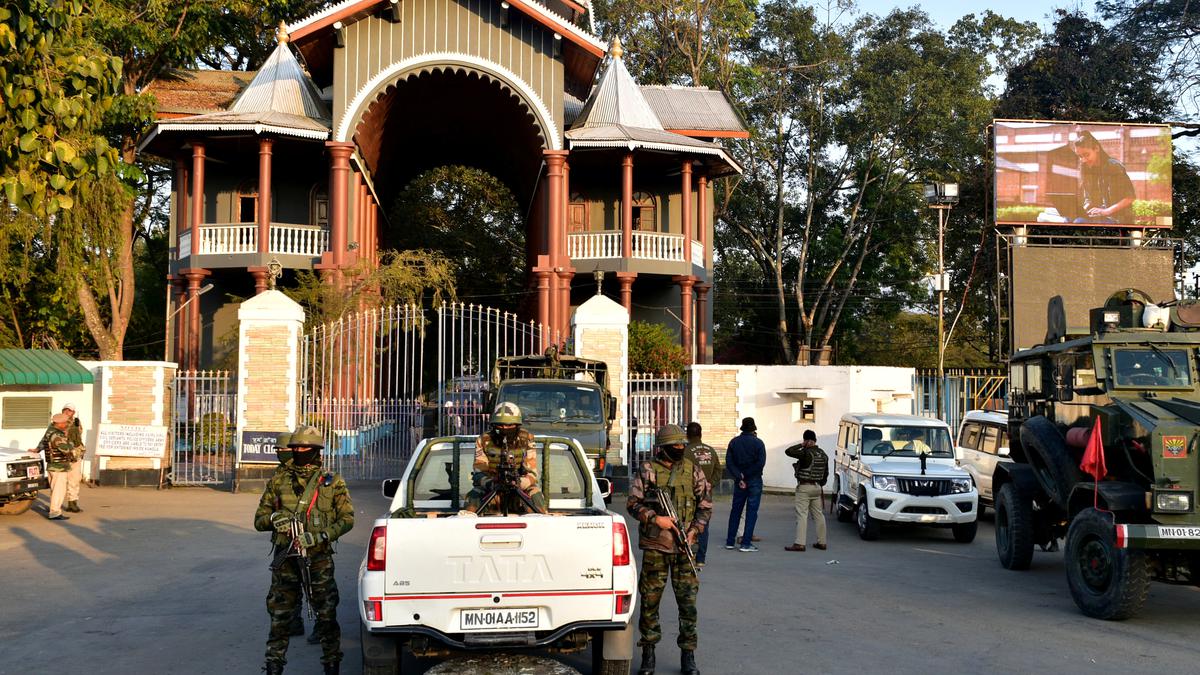
Central Idea:
The article discusses a significant event in Manipur where Meitei legislators, through a public oath at Kangla Fort, endorsed a six-point agenda with communal overtones, targeting the ‘Kuki’ community. This act, influenced by an armed militia called Arambai Tenggol, reflects a departure from constitutional duties and raises concerns about the legitimacy of elected representatives in a democratic state. The piece warns against the dangers of a radical agenda and highlights the potential parallels with historical incidents like the Bhindranwale episode in Punjab.
Key Highlights:
- Meitei legislators endorse a six-point agenda with communal overtones, targeting the ‘Kuki.’
- The oath-taking event at Kangla Fort is orchestrated by the armed militia, Arambai Tenggol.
- The agenda includes abrogating agreements, implementing NRC with 1951 as the base year, constructing a border fence, replacing Assam Rifles, removing ‘Kuki’ from Scheduled Tribe list, and relocating ‘Kuki refugees.’
- The omission of ‘disarmament’ from the agenda raises concerns about the armed militia’s influence.
Key Challenges:
- The event reflects a departure from constitutional duties by elected representatives.
- The influence of an armed militia on democratic processes raises questions about the legitimacy of the Indian state.
- The communal overtones in the agenda may deepen the emotional, demographic, and territorial divide.
Key Terms/Phrases:
- Shumang Leela: Traditional form of theatre in Manipur.
- Kangla Fort: The symbolic and traditional seat of power in Manipur.
- Arambai Tenggol: An armed militia influencing Meitei legislators and pushing a radical agenda.
- Bhindranwale Moment: Reference to the radicalization and armed conflict in Punjab during the 1980s.
Key Quotes:
- “Legislators lost Tagore’s dream of ‘clear stream of reason’ and a fearless mind.”
- “Elected representatives…pliable and can be blackmailed under duress.”
- “Armed militia chose Kangla Fort to revive Meitei indigenous tradition, culture, and religion.”
Key Examples/References:
- The six-point agenda and its potential impact on the vulnerable Kuki-Zomi-Hmar groups.
- The involvement of Arambais in violent attacks against Kuki-Zomi-Hmar villages.
- The parallels drawn with the radicalization of youth in Punjab under Bhindranwale.
Key Facts/Data:
- The Arambai Tenggol retains control over a significant amount of arms and ammunition.
- The communal agenda may lead to increased tensions between communities.
- The armed militia’s influence raises concerns about the democratic process in Manipur.
Critical Analysis:
- The legislators’ omission of ‘disarmament’ suggests a compromise with the armed militia’s agenda.
- The article warns against the potential consequences of allowing an armed militia to influence state decisions.
- The communal overtones in the agenda are criticized for undermining democratic and constitutional principles.
Way Forward:
- Emphasize the need for elected representatives to uphold constitutional duties.
- Advocate for dialogue and peaceful resolution to address the concerns of different communities.
- Strengthen mechanisms to prevent the influence of armed militias on democratic processes.
In conclusion, the article highlights the concerning events in Manipur, where elected representatives endorse a communal agenda influenced by an armed militia. It urges a recommitment to constitutional duties, warns against radicalization, and suggests a path forward through dialogue and democratic principles.
Get an IAS/IPS ranker as your 1: 1 personal mentor for UPSC 2024
Attend Now
Note4Students
From UPSC perspective, the following things are important :
Prelims level: Mother’s Absolute Affection Programme
Mains level: addressing child stunting in India requires a multifaceted approach
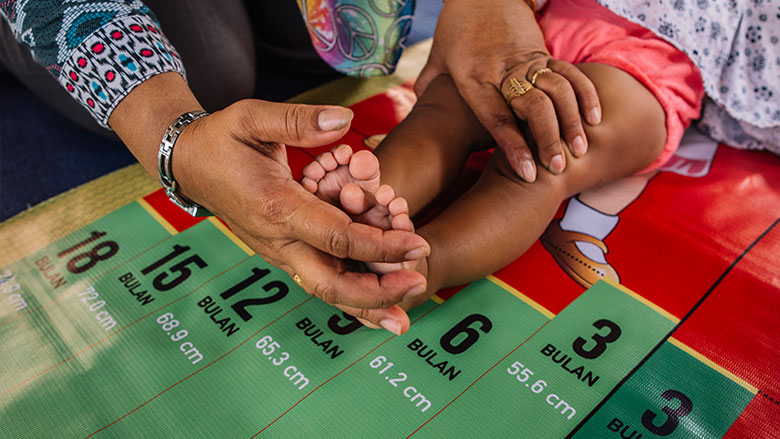
Central Idea:
Early childhood stunting not only impacts a child’s height but also influences cognitive development, potentially leading to lower educational achievements. The article emphasizes the importance of understanding the underlying mechanisms of this impact, particularly in low- and middle-income countries like India. It discusses a recent study in Ethiopia and Peru, highlighting the negative correlation between stunting at age 5 and later cognitive skills, specifically executive functions. The findings underscore the critical role of early childhood nutrition in determining cognitive development and educational outcomes.
Key Highlights:
- Stunting at around age 5 is linked to lower executive functions, including working memory and inhibitory control, in later childhood.
- Traditional cognitive-achievement tests may not fully capture inherent cognitive skills, and stunting’s impact may extend beyond cognitive deficits to include behavioral factors like delayed school enrollment.
- The article highlights the need for a deeper understanding of the mechanisms through which stunting affects educational achievements, especially in the context of low- and middle-income countries.
Key Challenges:
- Existing research often focuses on specific cognitive-achievement test scores, making it challenging to fully understand the complex relationship between early human capital investments, such as nutrition, and cognitive development.
- Achieving a comprehensive assessment of cognitive skills is complicated by the interplay of cognitive abilities, educational access, and other behavioral factors.
- The article stresses the need to move beyond traditional cognitive-achievement tests and focus on a deeper understanding of the mechanisms linking early human capital investments to cognitive development.
Key Terms and Phrases:
- Early childhood stunting
- Cognitive development
- Executive functions
- Behavioral factors
- Household fixed effects
- Poshan Abhiyaan
- Integrated Child Development Services
- Jal Jeevan Mission
- Swachh Bharat Mission
- Mother’s Absolute Affection Programme
- Complementary feeding
- Anganwadi worker
Key Quotes:
- “Stunting at approximately age 5 is negatively related to executive functions measured years later.”
- “Empirical studies have shown that women’s height and educational attainment are strong predictors of child stunting in India.”
- “Improvements in sanitation reduce the incidence of diarrhoea and stunting.”
- “Promoting early breastfeeding, along with continued breastfeeding for two years, is essential for optimal child development.”
Key Statements:
- The study in Ethiopia and Peru establishes a negative correlation between stunting at age 5 and later cognitive skills, emphasizing the long-term impact of early childhood stunting.
- The article stresses the need to move beyond traditional cognitive-achievement tests and focus on a deeper understanding of the mechanisms linking early human capital investments to cognitive development.
Key Examples and References:
- Sánchez et al.’s study in ‘World Development’ linking early under-nutrition to executive functions in Ethiopia and Peru.
- The role of initiatives like Poshan Abhiyaan, Integrated Child Development Services, Jal Jeevan Mission, and Swachh Bharat Mission in addressing stunting in India.
Key Facts and Data:
- The study in Ethiopia and Peru provides evidence of the negative relationship between stunting at age 5 and executive functions.
- Empirical studies highlight the predictive role of women’s height and educational attainment in child stunting in India.
Critical Analysis:
The article effectively highlights the limitations of traditional cognitive-achievement tests in assessing the impact of early human capital investments on cognitive development. It emphasizes the need for a more nuanced understanding of the complex factors contributing to lower educational achievements, particularly in low- and middle-income countries. The study’s focus on executive functions and the link between stunting and cognitive skills adds valuable insights to the existing literature.
Way Forward:
- Expand initiatives like the Mother’s Absolute Affection Programme to provide comprehensive lactation support and create breastfeeding-friendly environments.
- Implement and scale up community-based complementary feeding programs to educate parents about the importance of a diverse diet for children.
- Consider adding an extra Anganwadi worker to each center to enhance preschool instructional time, potentially improving developmental outcomes and creating employment opportunities.
In summary, addressing child stunting in India requires a multifaceted approach, including comprehensive nutrition initiatives, sanitation improvements, and strategic investments in education and childcare services. The article underscores the need for evidence-based policies to enhance early childhood nutrition and cognitive development.
Get an IAS/IPS ranker as your 1: 1 personal mentor for UPSC 2024
Attend Now
Note4Students
From UPSC perspective, the following things are important :
Mains level: importance of evidence-based decision-making and long-term goals in public health policies
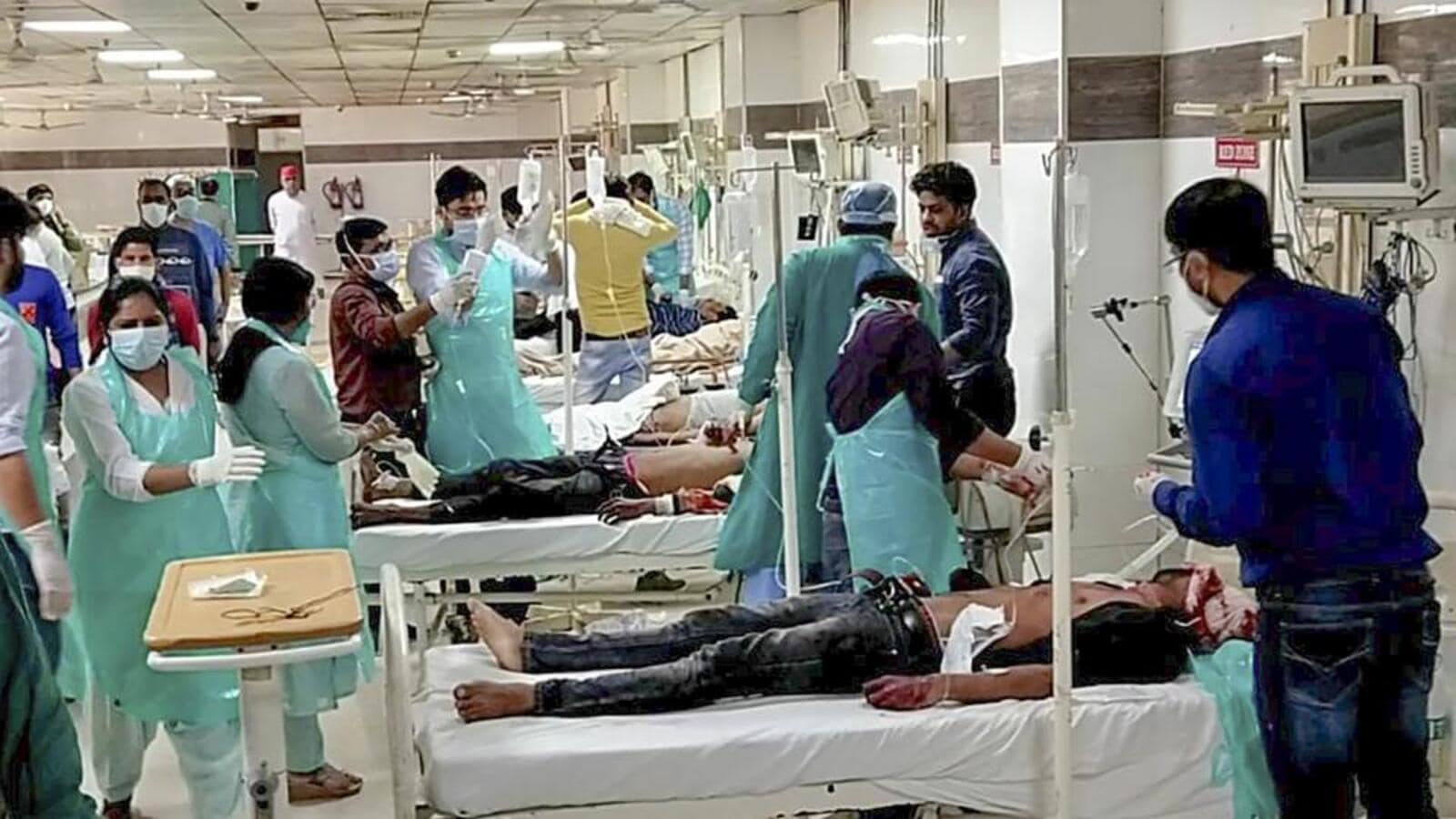
Central Idea:
The article highlights the need for a shift in the approach to public health management in democratic setups, emphasizing the importance of prioritizing preventive measures over immediate, politically-driven responses. It advocates for a separation of health-care decision-making from short-term political goals to ensure sustainable health strategies that address both immediate and future health needs.
Key Highlights:
- Silent victories in preventing diseases often go unnoticed in the pursuit of tangible achievements.
- Immediate response-focused initiatives divert attention from critical areas like sanitation, disease surveillance, and public health education.
- The case of dengue exemplifies the prioritization of emergency relief over long-term prevention strategies.
- The article stresses the importance of evidence-based decision-making and long-term goals in public health policies.
- Gaps in public health education and the influence of the pharmaceutical industry are recognized challenges.
- Disparities in achieving health policy targets, especially in nutrition programs, reveal gaps in public health efforts.
- Socio-economic factors like poverty, sanitation, and overcrowding contribute to health disparities in diseases like tuberculosis.
Key Terms/Phrases:
- Preventive health measures
- Vector bionomics
- Public health education
- Pharmaceutical industry influence
- Socio-economic factors
- Health policy targets
- Separation of powers approach
Key Quotes:
- “In a democratic setup, leaders often chase tangible achievements and overlook vital preventive efforts.”
- “Public health decisions should be based on scientific evidence and long-term goals, not electoral cycles.”
- “Behavioural change is key to managing public health challenges.”
- “Effective public health management should encompass preventive measures, policy formulation, community health, and environmental health.”
Key Statements:
- “Health care will benefit from being separated from political processes.”
- “Investments in nutrition programs have far-reaching implications for health and productivity.”
- “Public health is not just about treating diseases but preventing them.”
Key Examples and References:
- Dengue as an example of prioritizing immediate relief over long-term prevention.
- Disparity in achieving targets in the Prime Minister’s Overarching Scheme For Holistic Nourishment (POSHAN) Abhiyan Scheme.
- Disparity in TB cases between India and the United States due to socio-economic factors.
Key Facts/Data:
- 35.5% of children under five were stunted, and 32.1% were underweight in 2019-21.
- 58.6% to 67.1% increase in prevalence of anaemic children aged 6-59 months.
- India reported 21.4 lakh TB cases in 2021, an 18% increase from 2020.
Critical Analysis:
- The article effectively highlights the drawbacks of immediate, politically-driven health initiatives.
- Emphasizes the importance of evidence-based decision-making and long-term planning in public health.
- Recognizes gaps in public health education and the impact of socio-economic factors on health outcomes.
Way Forward:
- Advocate for a separation of health-care decision-making from short-term political goals.
- Strengthen public health education and adopt a multidisciplinary approach.
- Emphasize evidence-based decision-making and prioritize long-term preventive measures.
- Address socio-economic factors influencing health outcomes.
Get an IAS/IPS ranker as your 1: 1 personal mentor for UPSC 2024
Attend Now
Note4Students
From UPSC perspective, the following things are important :
Prelims level: Anaemia Mukt Bharat
Mains level: complexities of malnutrition, providing a comprehensive view of the two-way relationship between nutrition and health.
Get an IAS/IPS ranker as your 1: 1 personal mentor for UPSC 2024
Attend Now
Note4Students
From UPSC perspective, the following things are important :
Prelims level: na
Mains level: evolving nature of global warfare with the importance of academic excellence and technological prowess
Central Idea:
The article suggests that India’s upcoming National Security Strategy should incorporate a goal of having 10 universities in the top 100 global university rankings by India@100. It argues that the evolving nature of warfare, driven by advancements in technology and changing geopolitical dynamics, necessitates a strong connection between academic knowledge (Shaastra) and military capability (Shastra). The article emphasizes the importance of enhancing India’s educational institutions, particularly through strategic interventions, to bolster national security in an era where the line between civilian and military technology is blurring.
Key Highlights:
- Cathal Nolan’s thesis from “The Allure of Battle” is referenced, emphasizing the significance of endurance and technology over decisive battles in military history.
- The article highlights the changing global dynamics, particularly the US-China relationship and its impact on technology access and partnerships.
- The erosion of the distinction between civilian and military technology is discussed, with examples such as drones, satellite internet, artificial intelligence, quantum computing, and clean energy.
- The potential risks and responses of major players like China and the US are outlined, reflecting the evolving nature of global geopolitics.
Key Challenges:
- The article acknowledges criticisms of global university rankings, citing them as popularity contests, unreliable, incomplete, ideological, and unequal.
- The challenge of determining the relative importance of different disciplines, such as sciences versus humanities, is mentioned.
- The article underscores India’s current position in global university rankings (only 11 in the top 500) and the need for rapid improvement.
Key Terms:
- Shaastra: Academic knowledge.
- Shastra: Weapons or military capability.
- Foundational technologies: Technologies critical for national security.
- Friendshoring: The potential threat to partnerships with countries deemed friendly.
- Dual circulation: A policy shift by China to prioritize Chinese technologies over foreign ones.
- National Security Strategy: A document outlining a country’s approach to ensuring its security.
- Global university rankings: Lists evaluating universities based on various criteria.
Key Phrases:
- “Shaastra and Shastra are siblings”: Stresses the interconnectedness of academic knowledge and military capabilities.
- “Foundational technologies behind a high fence”: Refers to the US strategy of restricting access to critical technologies.
- “Friendshoring is threatened”: Indicates the potential impact on partnerships with friendly nations.
- “Dual circulation now means”: Describes China’s emphasis on using Chinese technologies.
- “Charge into the valley of death”: A reference to a Tennyson poem, highlighting the need for strategic thinking over blind bravery.
Key Quotes:
- “Sweat saves blood, blood saves lives, but brains save both” – Field Marshal Rommel: Emphasizes the importance of strategic thinking in military endeavors.
Key Statements:
- “The distinction between civilian and military technology erodes with drones, satellite internet, artificial intelligence, quantum computing, and clean energy.”
- “China’s response by banning Tesla cars and Apple phones from army bases.”
- “Global rankings matter: 71% of universities have a ranking goal, and 68% use them as a tool for management.”
Key Examples and References:
- Reference to the historical role of American universities, particularly MIT, in military partnerships.
- China’s proactive approach to global university rankings, starting with Project 211 in 1995.
- Mention of the Defense Technology Council proposed in India to improve project management.
Key Facts and Data:
- India has 11 universities in the top 500 global university rankings.
- China has 71 universities in the top 500 QS rankings due to strategic initiatives from 1995 to 2022.
- American universities have historically played a crucial role in military advancements.
Critical Analysis:
The article effectively links the evolving nature of global warfare with the importance of academic excellence and technological prowess. It presents a critical analysis of the challenges posed by changing geopolitical dynamics and the potential impact on national security. The integration of historical references, global examples, and quotes adds depth to the argument.
Way Forward:
- Implement strategic interventions to enhance the top 20 government universities in India.
- Consolidate independent research labs into top institutions for better research outcomes.
- Concentrate government research funding to universities and incentivize corporate research collaboration.
- Introduce performance-based funding to encourage improvements in research metrics and rankings.
- Strengthen partnerships between universities and the proposed Defense Technology Council for effective project management.
Get an IAS/IPS ranker as your 1: 1 personal mentor for UPSC 2024
Attend Now
Note4Students
From UPSC perspective, the following things are important :
Prelims level: MGNREGS
Mains level: misrepresentation of research findings to support the mandatory implementation of ABPS in MGNREGS
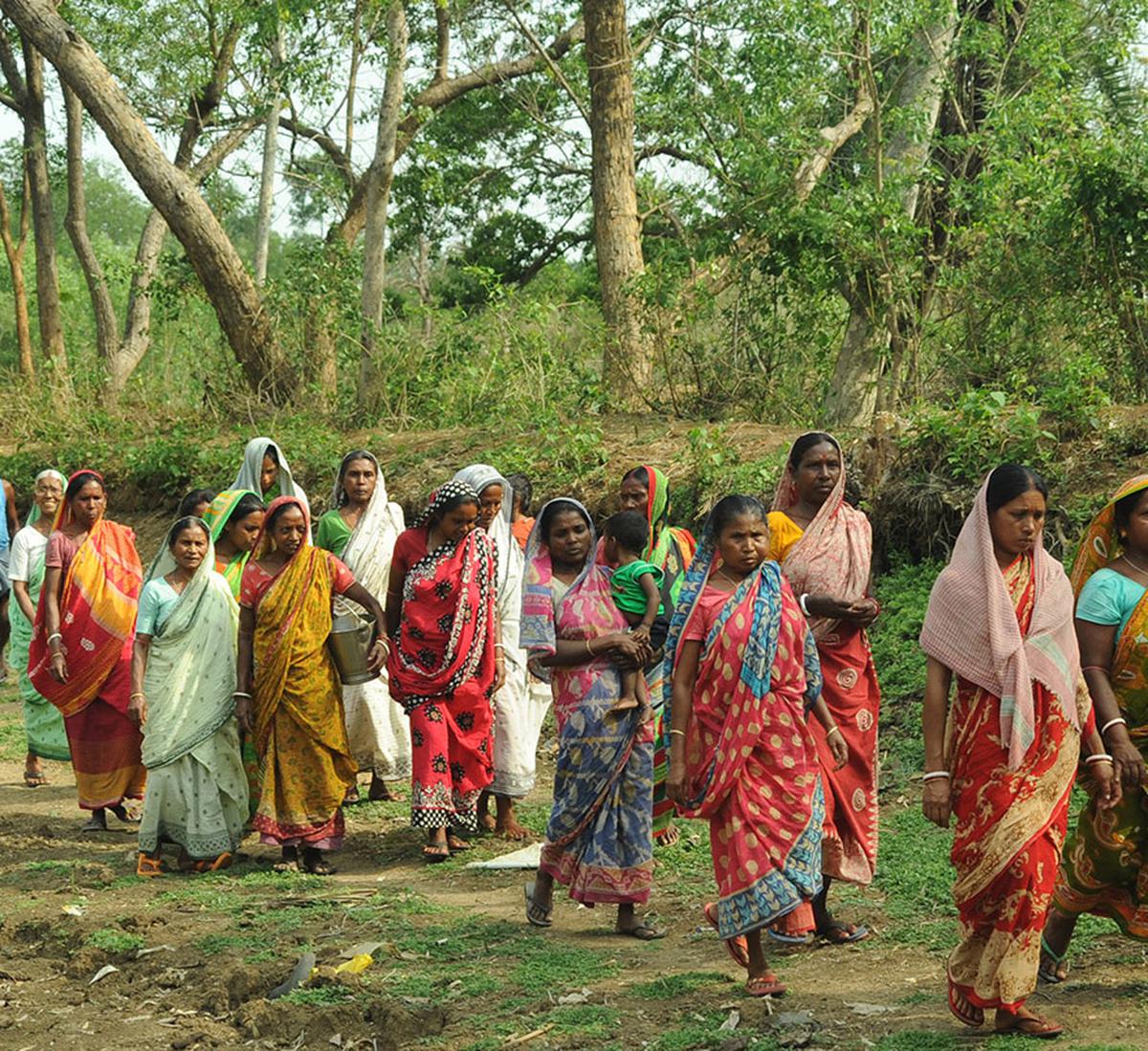
Central Idea:
The Rural Development Ministry mandated Aadhaar-Based Payment Systems (ABPS) in the Mahatma Gandhi National Rural Employment Guarantee Scheme (MGNREGS), despite protests from workers and questionable government claims. The article highlights the complexities of ABPS, the lack of evidence supporting its benefits, and the misrepresentation of research findings that supposedly endorse ABPS. It argues for the continuation of account-based payments in MGNREGS.
Key Highlights:
- ABPS Complexity: ABPS in MGNREGS involves Aadhaar seeding, authentication, and linking to bank accounts, leading to potential glitches causing wage delays and denial of work.
- Government Claims: The government asserted that ABPS would eliminate duplicate job cards, reduce delays, and lower payment rejections, but these claims are questioned.
- Deletion of Job Cards: Officials reportedly deleted job cards under pressure to meet Aadhaar seeding targets, leading to spelling mismatches and exaggerated savings claims.
- LibTech Study: A public research group’s study, cited by the government, found no statistically significant difference in efficiency between ABPS and account-based payments.
- Misrepresentation: The Ministry misrepresented the LibTech study, incorrectly claiming that it endorsed ABPS despite no significant gains.
Key Challenges:
- Technological Glitches: Workers face issues due to errors in Aadhaar seeding, authentication, and bank account linking, causing financial losses and delays.
- Deletion of Job Cards: Job card deletions surged, raising concerns about the accuracy of the process and the pressure to meet Aadhaar seeding targets.
- Misleading Claims: The government’s claims of efficiency gains with ABPS are contradicted by research, indicating a lack of transparency and credibility.
Key Terms and Phrases:
- Aadhaar-Based Payment Systems (ABPS): A payment system using Aadhaar authentication and linking for financial transactions.
- Mahatma Gandhi National Rural Employment Guarantee Scheme (MGNREGS): A social security scheme providing rural employment.
- Aadhaar Seeding: Linking Aadhaar numbers with relevant databases, such as job cards and bank accounts.
- Job Card Deletions: Removal of MGNREGS job cards, allegedly driven by the pressure to meet Aadhaar seeding targets.
Key Quotes:
- “Incorrectness in any of the above steps for ABPS means that the worker is denied work, does not receive wages, or is not paid in their preferred account.”
- “In the last two years alone, job cards of over 7 crore workers got deleted.”
- “LibTech’s study is based on a sample of 3.2 crore transactions. The difference was not statistically significant, providing evidence that ABPS is not quicker than account-based payments.”
Key Statements:
- The government’s claims of ABPS benefits lack credibility, with evidence pointing to errors in job card deletions and questionable efficiency gains.
- The misrepresentation of research findings by the Ministry undermines the justification for making ABPS mandatory.
Key Examples and References:
- Research papers in Economic and Political Weekly highlighting errors in job card deletions and the pressure to meet Aadhaar seeding targets.
- The Ministry’s press release misrepresenting the LibTech study’s findings.
Key Facts and Data:
- A 247% increase in job card deletions in FY 2022–23, with over 7 crore workers affected.
- As of January 11, 2024, out of 25.6 crore registered workers, only 16.9 crore are eligible for ABPS.
Critical Analysis:
The article critically examines the complexities and challenges associated with ABPS, questions the government’s claims, and exposes the misrepresentation of research findings to support the mandatory implementation of ABPS in MGNREGS.
Way Forward:
- Advocate for account-based payments in MGNREGS due to the difficulties and glitches associated with ABPS.
- Emphasize the need for transparency, credibility, and evidence-based decision-making in the implementation of payment systems.
- Call for a reevaluation of the decision to make ABPS mandatory, considering the workers’ concerns and the lack of proven benefits.
By addressing these issues, the government can ensure a more efficient and transparent payment system in MGNREGS.
Get an IAS/IPS ranker as your 1: 1 personal mentor for UPSC 2024
Attend Now
Note4Students
From UPSC perspective, the following things are important :
Prelims level: Bharat Ratna award
Mains level: Karpoori Thakur, a backward-caste leader
Get an IAS/IPS ranker as your 1: 1 personal mentor for UPSC 2024
Attend Now
Note4Students
From UPSC perspective, the following things are important :
Prelims level: unresolved GST issues
Mains level: insights into the economic performance of the government
Central Idea:
The discussion between D.K. Srivastava and G. Vijay analyzes the economic performance of the BJP-led government in its second term, focusing on policy prescriptions, the impact of major reforms such as GST and corporate income tax changes, and the recovery from the COVID-19 pandemic. The conversation delves into the challenges faced by the GST Council, the government’s emphasis on infrastructure development, and the performance of the agricultural sector over the past five years.
Key Highlights:
- The Indian economy faced challenges in 2019 due to GST implementation issues and corporate income tax reforms, leading to a weak fiscal situation.
- The COVID-19 pandemic caused a sharp contraction, followed by a rapid recovery with GDP growth rates exceeding expectations.
- Recovery was K-shaped, impacting contact-intensive sectors and large service sectors, resulting in a focus on infrastructure expansion for long-term growth.
- The digitization of the economy through the UPI platform was highlighted as a positive outcome, especially for small-scale industries in the informal sector.
- The GST story was deemed incomplete, with concerns about revenue autonomy for State governments and challenges in GST reform.
- The government’s capital expenditure increase in the last budget aimed at income generation and employment growth, but concerns were raised about the quality of employment generated.
- The agricultural sector performed well in terms of growth, except for the current year, but challenges such as supply chain shocks and inflation in key food items were discussed.
Key Challenges:
- Unresolved issues in GST reform, including revenue neutrality and loss of revenue autonomy for State governments.
- Quality of employment generated by capital-intensive infrastructure projects and the persistently high unemployment rate.
- Inconsistent policies in the agricultural sector, with challenges like bans on exports and uncertainties affecting production decisions.
Key Terms:
- GST (Goods and Services Tax)
- UPI (Unified Payments Interface)
Key Phrases:
- “K-shaped recovery”
- “Last mile delivery”
- “Jobless growth”
- “Centre-State relations”
- “Capital stimulus”
- “Job creation elasticities”
- “Unprotected informal sector employment”
Key Quotes:
- “Between 2014 and 19, we provided a rejuvenated Centre-State dynamic, cooperative federalism, GST Council, and a strident commitment to fiscal discipline.”
- “The government stood out as a performing government, a government whose signature was in the last mile delivery.”
Key Statements:
- Recovery from the economic challenges post-2019 was marked by robust GDP growth, particularly in FY22 and FY23.
- The GST Council faced criticism for incomplete reform, loss of revenue autonomy for State governments, and politicization of resource distribution.
Key Examples and References:
- Demonetization in 2016 and its long-term impact on economic contraction.
- The increase in capital expenditure in the last budget and its purported aim of income generation and employment growth.
Critical Analysis:
The discussion highlights the positive aspects of economic recovery, infrastructure development, and agriculture sector growth. However, challenges such as the quality of employment, unresolved GST issues, and inconsistent policies in agriculture are critically analyzed. The impact of global challenges, supply-side issues, and the need for a balanced approach between capital stimulus and consumption stimulation are emphasized.
Way Forward:
- Address GST reform issues to ensure revenue autonomy for State governments.
- Evaluate the employment impact of infrastructure projects and focus on generating quality employment.
- Maintain a balance between capital stimulus and consumption stimulation to address external sector challenges.
- Implement consistent and supportive policies in the agricultural sector to address supply chain shocks and inflation.
- Continue efforts to digitize the economy for inclusive growth and last-mile delivery.
This comprehensive analysis provides insights into the economic performance of the BJP-led government, covering various dimensions and offering suggestions for future considerations.
Get an IAS/IPS ranker as your 1: 1 personal mentor for UPSC 2024
Attend Now
Note4Students
From UPSC perspective, the following things are important :
Prelims level: na
Mains level: the current political agenda's impact on India's cultural diversity and constitutional values
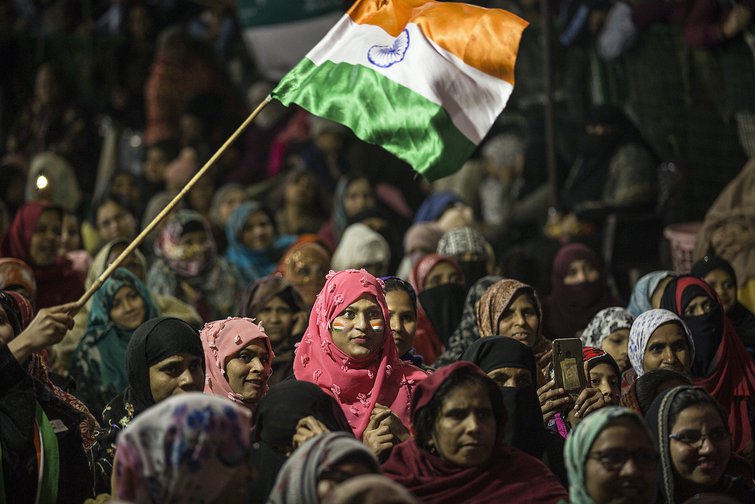
Central Idea:
The article emphasizes the threat to India’s secular fabric and cultural diversity posed by the current political agenda, particularly the push towards a theocratic state under the ruling Bharatiya Janata Party (BJP). It underscores the importance of reasserting the constitutional principles of a pluralistic and tolerant India, in contrast to the growing dominance of a unidimensional cultural and religious identity.
Key Highlights:
- The “Objective resolution” of the Indian Constitution adopted in 1947 forms the basis of the Preamble, but recent state-sponsored events challenge the constitutional commitment to secularism.
- The BJP’s agenda is criticized for promoting a theocratic state and diminishing India’s rich cultural diversity by imposing a singular identity.
- The article laments the erosion of the concept of “unity in diversity,” replacing it with a vision of one nation, one market, one language, and one official religion.
- The Constitution’s recognition of and respect for diversities and differences, both politically and culturally, is highlighted as the foundation of India’s progress.
Key Challenges:
- The political effort to centralize and homogenize cultural and religious practices, particularly in favor of Hindutva, poses a challenge to India’s historical pluralism.
- The erosion of tolerance and the imposition of a singular identity may lead to suspicion and animosity among different religious and cultural groups.
- The celebration of a ‘Hindu Rashtra’ contradicts the constitutional principles of a secular state, potentially endangering India’s hard-fought independence.
Key Terms:
- Hindutva: The political ideology that seeks to establish the hegemony of Hindus and the Hindu way of life.
- Theocratic: Relating to a system of government in which religious leaders control the state.
- Pluralism: The coexistence of diverse cultural, religious, or ethnic groups within a society.
- Constitution: The fundamental legal document outlining the structure and principles of a government.
Key Phrases:
- “Flattening of multidimensions”: Describes the attempt to impose a unidimensional cultural and religious identity, eroding India’s diverse cultural landscape.
- “Unity in diversity”: Formerly celebrated, this concept is criticized for being replaced by a vision of singular identity.
- “One nation, one market, one colour, one language, one election”: Illustrates the push towards homogenization in various aspects of Indian society.
Key Quotes:
- “Will Indians place the country above their creed or will they place creed above country?”
- “Our independence will be put in jeopardy a second time and probably be lost forever.”
- “When power outstrips ability, we will fall on evil days.”
Key Statements:
- The Indian Constitution recognizes and incorporates space for diversities and differences in both politics and culture.
- The celebration of a ‘Hindu Rashtra’ is in direct contradiction to the Indian Constitution.
- The Constitution is seen as a guarantee of the right to live with liberty, equality, and justice.
Key Examples and References:
- The consecration of the temple in Ayodhya and the state-sponsored events on January 22, 2024, are cited as instances where the secular principles of the Constitution were violated.
- Mention of diverse celebrations of Dusshera, representing different cultural practices across India.
Key Facts and Data:
- The Indian Constitution was adopted 75 years ago, emphasizing tolerance and solidarity as foundational principles.
- The celebration of the 75th year of the Republic coincides with concerns about the erosion of secular principles.
Critical Analysis:
The article critically examines the current political agenda’s impact on India’s cultural diversity and constitutional values. It highlights the dangers of sidelining pluralism and secularism in favor of a singular identity, emphasizing the need for citizens to assert the constitutional republic over a ‘Hindu Rashtra.’
Way Forward:
- The article calls for a reassertion of the constitutional principles of a pluralistic and tolerant India.
- Citizens are urged to make choices that align with the values of the Constitution, ensuring a diverse and inclusive nation.
- A collective duty is emphasized in retaining the values that have shaped India’s social democracy for 75 years.
In summary, the article advocates for a return to the constitutional principles that have guided India for 75 years, safeguarding the nation’s pluralism and diversity against the current trend towards a unidimensional cultural and religious identity
Get an IAS/IPS ranker as your 1: 1 personal mentor for UPSC 2024
Attend Now
Note4Students
From UPSC perspective, the following things are important :
Prelims level: Jal Jeevan Mission
Mains level: commendable progress in addressing rural water needs

Central Idea: The Jal Jeevan Mission, launched by Prime Minister Narendra Modi in 2019, has made significant strides in providing tap water to rural households in India, with a focus on addressing diverse regional challenges. The mission aims to ensure clean water access to every rural household, promoting health, hygiene, and overall well-being. The approach is characterized by a commitment to inclusivity, community involvement, and sustainable development.
Key Highlights:
- Tap water provided to 73% of rural households, benefiting over 14 crore households.
- Diverse strategies employed, including insulated pipes, multi-village schemes, and community water purification plants.
- Notable improvements observed in areas such as reduced migration, minimized human-animal conflicts, and revived celebratory events.
- Impact extends beyond clean water provision to encompass safety, health, and environmental benefits.
- Studies indicate potential reduction in infant deaths, prevention of diarrhoeal deaths, and significant economic savings.
Key Challenges:
- Infrastructural challenges due to diverse terrains and geographical variations.
- Customizing solutions for different regional needs.
- Ensuring sustainability and community involvement in the long term.
Key Terms:
- Jal Jeevan Mission: Government initiative aimed at providing tap water to rural households.
- Sabka Saath, Sabka Vikas, Sabka Vishwas aur Sabka Prayas: Guiding principle emphasizing inclusive development.
- Nal Jal Mitra: Initiative empowering villagers with skills for maintaining water supply systems.
Key Phrases:
- “No one is left behind”: Core theme emphasizing inclusivity.
- “Elixir of life”: Reference to the importance of water for well-being.
Key Quotes:
- “The growth story of the Jal Jeevan Mission is not confined to data; changes can be seen on the ground.”
- “True development is not just about infrastructure; it is about bringing in a sense of community.”
Key Statements:
- The mission focuses on long-term, regular access to quality water for every rural household.
- Community involvement, especially of women and youth, is integral to the mission’s success.
Key Examples and References:
- Kyarkuli Bhatta in Uttarakhand, Kusumdih in Jharkhand, and Chandpur in Maharashtra cited as examples of positive changes due to the mission.
- Studies by Dr. Michael Kremer and the World Health Organization provide evidence of the mission’s positive impact.
Critical Analysis:
The Jal Jeevan Mission has made commendable progress in addressing rural water needs. The tailored approach to diverse challenges, inclusion of communities, and the focus on holistic development contribute to its success. Continuous monitoring, transparency, and data-driven decision-making are strengths. Challenges lie in sustaining community involvement and ensuring long-term infrastructure stability.
Way Forward:
- Continue prioritizing community involvement and inclusivity.
- Strengthen monitoring mechanisms for long-term sustainability.
- Emphasize skill development for rural communities to ensure self-reliance in maintaining water supply systems.
- Explore innovative solutions for regions with unique challenges.
Get an IAS/IPS ranker as your 1: 1 personal mentor for UPSC 2024
Attend Now

Central Idea:
The article highlights the longstanding issue of identical or similar brand names for drugs in India, posing serious risks of confusion and prescription errors. Despite past recommendations, the problem persists due to poor regulatory oversight and a lack of comprehensive databases. The consequences are particularly alarming in a country with a multilingual population and lax pharmacy regulations.
Key Highlights:
- Identical brand names for drugs treating different conditions, such as ‘Linamac,’ raise concerns about patient safety.
- The problem of similar names extends beyond identical matches to include phonetically and visually similar names.
- The article points out that India’s pharmacies are poorly regulated, increasing the likelihood of errors, especially with drug names being predominantly in English.
- Previous recommendations from the Supreme Court and Parliamentary Committee were ignored until 2019 when the Ministry of Health introduced rules, but they seem ineffective.
Key Challenges:
- Lack of comprehensive data on prescription errors in India hampers understanding and acknowledgment of the problem.
- Weak regulatory mechanisms and self-certification by pharmaceutical companies contribute to the persistence of confusing drug names.
- The absence of a centralized database for pharmaceutical brand names complicates efforts to prevent confusingly similar names.
- Limited political will within the Ministry of Health’s Drug Regulation Section to implement reforms exacerbates the issue.
Key Terms:
- Pharmaceutical Trademark Infringement: Legal disputes among pharmaceutical companies over trademarks.
- Undertaking: A commitment or assurance made by pharmaceutical companies regarding the uniqueness of their drug brand names.
- CDSCO (Central Drugs Standard Control Organisation): The central regulatory body for pharmaceuticals and medical devices in India.
Key Phrases:
- “Identical trade names for drugs with different active ingredients”
- “Phonetically and visually similar trade names”
- “Poorly regulated Indian pharmacies”
- “Flimsy system” for preventing confusing drug names
Key Quotes:
- “The consequences of confusion between these medications at the pharmacy can be serious for patients.”
- “The problem of similar or identical trade names for drugs has been known for several decades.”
Key Statements:
- “The Ministry of Health brought in the Drugs and Cosmetics (Thirteenth Amendment) Rules, 2019, putting in place a flimsy system…”
- “As a country, India has no data on prescription errors. And for the Ministry of Health, the absence of data is the absence of a problem.”
Key Examples and References:
- Dr. Vincent Rajkumar’s shock over drugs with identical names treating different conditions.
- Example of the brand name ‘Medzole’ used by different companies for drugs treating various medical conditions.
Key Facts:
- English language used on drug packaging, spoken by less than 10% of the population.
- Poor regulation of Indian pharmacies dispensing drugs without prescriptions.
Critical Analysis:
The article critically assesses the inadequacies of the regulatory framework, emphasizing the ineffective self-certification system and the absence of a centralized database. It underscores the lack of political will to address a long-standing issue that jeopardizes patient safety.
Way Forward:
- Establish a comprehensive database of pharmaceutical brand names.
- Strengthen regulatory mechanisms to prevent confusingly similar drug names.
- Implement effective measures, possibly modeled after systems in the United States and Europe, to minimize prescription errors.
- Increase awareness among pharmaceutical companies about the importance of unique and easily distinguishable drug names.
- Advocate for policy changes that prioritize patient safety in drug nomenclature.
In conclusion, addressing the issue requires a multi-faceted approach involving regulatory reforms, data collection, and industry awareness to ensure patient safety in the pharmaceutical landscape in India.
Get an IAS/IPS ranker as your 1: 1 personal mentor for UPSC 2024
Attend Now
Note4Students
From UPSC perspective, the following things are important :
Prelims level: Erga Omnes Obligation
Mains level: rules-based international order
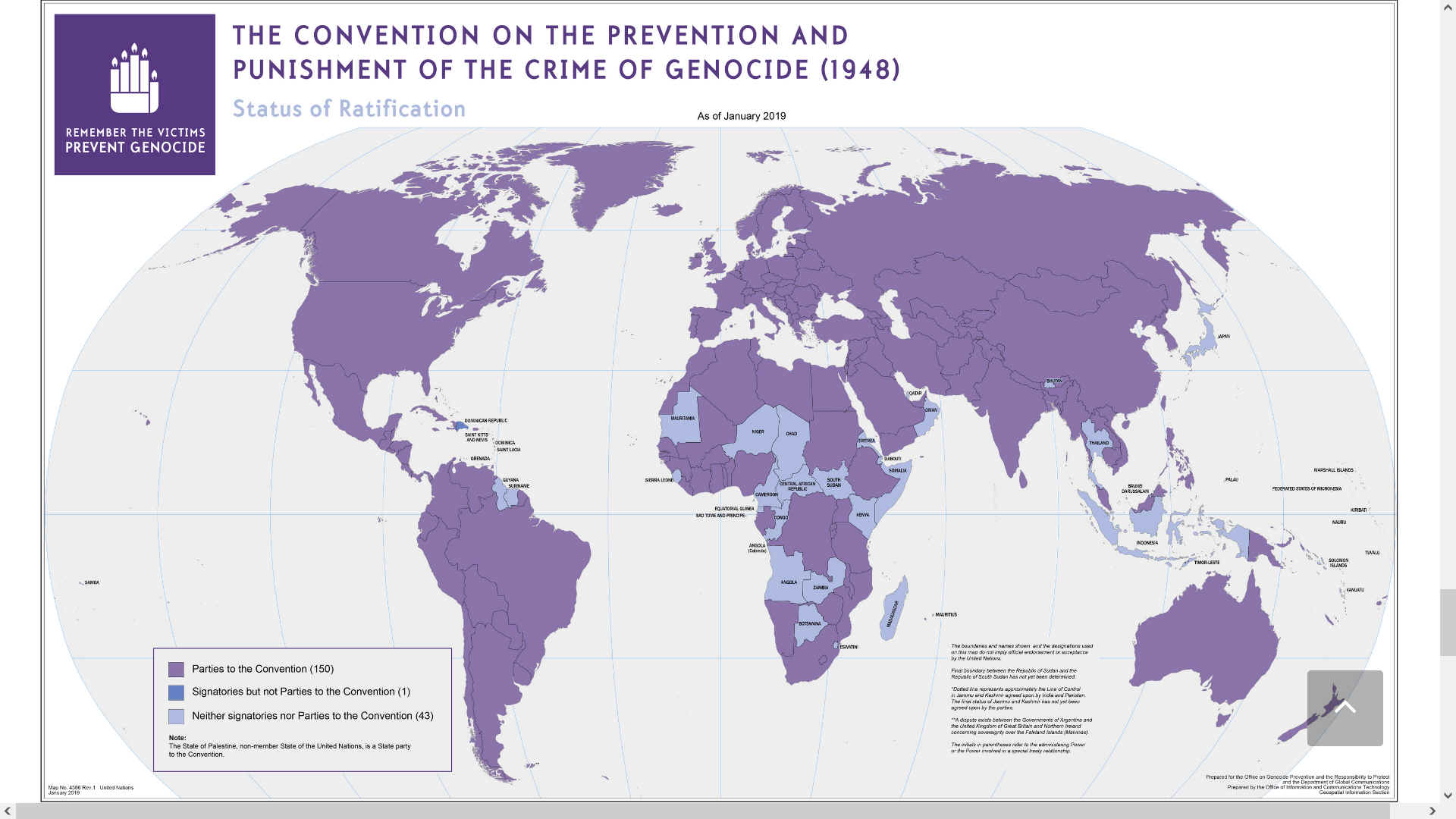
Central Idea:
The article discusses the legal proceedings at the International Court of Justice (ICJ) initiated by South Africa against Israel, alleging violations of the Genocide Convention in the conduct of military operations in Gaza. The international legal context, arguments presented by both sides, and potential provisional measures are highlighted.
Key Highlights:
- South Africa’s legal action against Israel based on the Genocide Convention.
- Debate and international reactions to the case, with Bangladesh and Jordan supporting South Africa, and Germany supporting Israel.
- The significance of provisional measures in protecting rights before a final determination.
- Challenges in proving the specific intent for genocide and contrasting arguments from South Africa and Israel.
- Potential outcomes and the broader context of international law legitimacy.
Key Challenges:
- Demonstrating specific intent for genocide.
- Varying international reactions and political divisions.
- Crafting effective provisional measures acceptable to both parties.
- Addressing the split between formerly colonial powers and others in international law opinions.
Key Terms:
- Genocide Convention: An international treaty prohibiting acts committed with the intent to destroy, in whole or in part, a national, ethnical, racial, or religious group.
- Provisional Measures: Interim orders issued by a court to protect rights pending a final determination of a case.
- Erga Omnes Obligation: The obligation of states to take action to prevent genocide, a duty owed to the international community as a whole.
- Dolus Specialis: Specific intent required to establish the crime of genocide.
- International Criminal Court (ICC): An international tribunal that prosecutes individuals for the international crimes of genocide, crimes against humanity, and war crimes.
- Rules-Based International Order: A system where international relations are governed by agreed-upon rules and principles.
Key Phrases:
- “Provisional measures” as interim orders.
- “Erga omnes obligation” for states to prevent genocide.
- “Dolus specialis” indicating specific intent for genocide.
- “Rules-based international order” questioned by the proceedings.
Key Quotes:
- “Provisional measures are issued pending the final determination of a case.”
- “The split seems to track the divide between formerly colonial or imperial powers and others.”
- “The legitimacy of international law itself is at stake.”
Key Statements:
- South Africa’s claim based on being unrelated to the conflict but having an obligation to prevent genocide.
- Israel’s defense focused on the absence of a dispute and the multiple interpretations of statements.
- International law viewed as invented by the imperial “West.”
Key Examples and References:
- The Gambia versus Myanmar case.
- Germany’s contrasting positions in different legal cases.
- Alleged genocidal statements by Israeli politicians echoed by soldiers on TikTok.
Key Facts:
- December 29, 2023: South Africa initiates ICJ proceedings against Israel.
- January 11-12, 2024: ICJ hearing on provisional measures.
- 24,000-plus deaths in Gaza during the present war.
- Destruction of civilian infrastructure in Gaza.
- Germany’s intervention in The Gambia versus Myanmar case.
Key Data:
- Data includes 24,000-plus deaths in Gaza during the present war and destruction of civilian infrastructure in Gaza.
Critical Analysis:
The article critically examines the challenges of proving genocide, the international split in opinions, and questions the legitimacy of the “rules-based international order.” It underscores the broader implications of the ICJ’s decision on the perception of international law.
Way Forward:
- Await the ICJ’s ruling on provisional measures.
- Consider potential alternatives for provisional measures, such as a humanitarian ceasefire or facilitating resource entry into Gaza.
- Observe how nation-states respond to the ICJ’s decision and its impact on international law legitimacy.
Get an IAS/IPS ranker as your 1: 1 personal mentor for UPSC 2024
Attend Now
Note4Students
From UPSC perspective, the following things are important :
Prelims level: Kesavananda Bharati case
Mains level: relevance and importance of the Basic Structure doctrine in maintaining a balance of power in a democracy
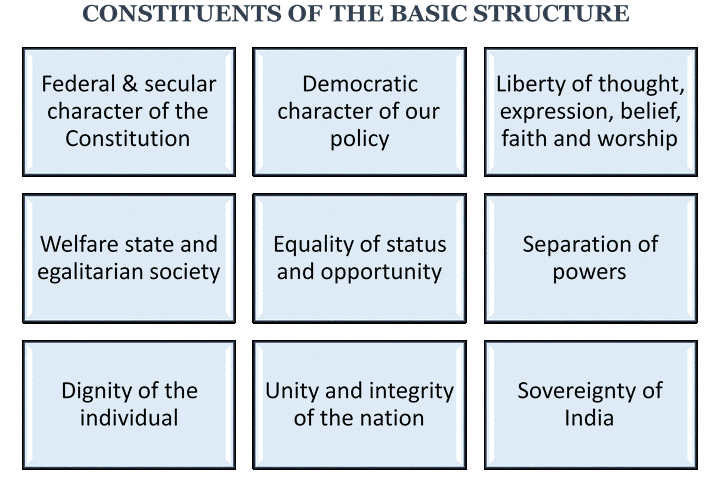
Central Idea:
The article underscores the significance of the Kesavananda Bharati case in Indian constitutional history, highlighting how it established a crucial safeguard against potential tyranny and dictatorship. The case introduced the concept of the Basic Structure doctrine, asserting that even constitutional amendments passed by a parliamentary majority could be declared unconstitutional if they violated the fundamental principles integral to the Indian Constitution.
Key Highlights:
- The Kesavananda Bharati case marked a turning point by introducing the Basic Structure doctrine, preventing the constitutionalization of gross aberrations or tyranny through amendments.
- The Basic Structure doctrine empowers the judiciary to act as a check against potential misuse of power by the majority, safeguarding democracy.
- The article traces the evolution of this doctrine from earlier cases, such as Shankari Prasad, Sajjan Singh, and Golaknath, leading up to the Kesavananda Bharati judgment.
Key Challenges:
- The Basic Structure doctrine has faced challenges from those seeking to dilute or ignore its significance, posing a threat to the enduring democratic principles it upholds.
- The potential for misuse or misinterpretation of the Basic Structure doctrine could lead to controversies and confrontations in politics and governance.
Key Terms:
- Basic Structure: The fundamental principles and core features of the Indian Constitution that cannot be altered by constitutional amendments.
- Parliamentary Majority: The voting majority in the Parliament required to pass constitutional amendments.
- Constitutional Amendments: Changes made to the constitution, often requiring a special majority in the Parliament.
Key Phrases:
- “Basic Structure makes it impossible to constitutionalize gross aberrations.”
- “Anti-majoritarian safeguards”: Mechanisms in place to protect against the potential tyranny of the majority in a democracy.
Key Quotes:
- “Even a constitutional amendment can be declared unconstitutional if it violates the Basic Structure.”
- “The power of amendment… does not include the power to abrogate the Constitution.”
Anecdotes:
- The unsavoury episode of Chief Justice A N Ray attempting to unilaterally review the Kesavananda Bharati judgment in 1975 is highlighted, adding drama to the historical significance of the case.
- The description of Nani Palkhivala’s arguments as “divinity speaking through him” during the case adds a personal touch to the historical narrative.
Key Statements:
- “The highest bulwark of such safeguards is the Indian Constitution.”
- “Long live Basic Structure, despite the attempt of constitutional pygmies to jettison, dilute or ignore it.”
Key Examples and References:
- Reference to the Shankari Prasad, Sajjan Singh, and Golaknath cases to illustrate the evolution of the Basic Structure doctrine.
- Mention of the 24th to 26th constitutional amendments enacted in 1971 to overrule specific judgments and provide context to the Kesavananda Bharati case.
Key Facts and Data:
- The Kesavananda Bharati case involved 703 pages of judgment spread over 11 judicial opinions, making it India’s longest argued case with the largest bench.
- The Golaknath case in 1967 had a 6-5 majority holding the entire Part 3 of the Constitution unamendable.
Critical Analysis:
The article presents a critical analysis of the Kesavananda Bharati case, highlighting its significance as a safeguard against potential misuse of power. It underscores the importance of the Basic Structure doctrine in preserving democratic principles and preventing constitutional aberrations.
Way Forward:
- Emphasize the continued relevance and importance of the Basic Structure doctrine in maintaining a balance of power in a democracy.
- Advocate for a nuanced understanding and application of the doctrine to ensure its integrity while addressing any legitimate concerns about its misuse.
Get an IAS/IPS ranker as your 1: 1 personal mentor for UPSC 2024
Attend Now
Note4Students
From UPSC perspective, the following things are important :
Prelims level: Non-tariff barriers (NBTs). Quality control order (QCO)
Mains level: success of 'Make in India' policies in the toy industry

Central Idea:
The article discusses India’s toy industry’s recent shift to net exports, attributing the success to protectionist measures under the ‘Make in India’ initiative. It raises questions about the efficacy of these policies and calls for a public release of an officially sponsored research study by the Indian Institute of Management Lucknow (IIM-L) to facilitate a more informed policy discussion.
Key Highlights:
- Between 2014-15 and 2022-23, India’s toy exports increased significantly, turning the country into a net exporter, while imports declined.
- An unpublished IIM-L case study, sponsored by DPIIT, credits the export success to promotional efforts under ‘Make in India.’
- The article questions the reported success and analyzes official statistics to understand the factors behind the industry’s turnaround.
Key Challenges:
- Lack of transparency regarding the IIM-L case study, creating ambiguity about the actual impact of ‘Make in India’ on the toy industry.
- Concerns about the sustainability of protectionist measures and the potential for “rent-seeking” behavior in the absence of complementary policies.
- The decline in labor productivity and other indicators in the toy industry despite protectionist measures.
Key Terms:
- ‘Make in India’ initiative.
- Net exports (exports minus imports).
- Protectionism.
- Non-tariff barriers (NBTs).
- Quality control order (QCO).
- Annual Survey of Industries (ASI).
- Fixed capital per worker.
- Gross value of output.
Key Phrases:
- “Turnaround in the labour-intensive industry.”
- “Rising protectionism since 2020-21.”
- “Infant industry argument.”
- “Learning by doing.”
- “Virtuous circle of expanding domestic capabilities.”
Key Quotes:
- “India has turned into a net toys exporter since 2020-21. ‘Make in India’ policies made it possible.”
- “Perhaps the IIM-L’s study uses different evidence to buttress its contention.”
- “Rising tariff and non-tariff barriers have made it possible.”
Key Statements:
- The article questions the correlation between ‘Make in India’ policies and the reported success in the toy industry.
- Concerns are raised about the impact of protectionism on the industry’s long-term competitiveness.
- Calls for transparency and public release of the IIM-L case study to facilitate informed policy discussions.
Key Examples and References:
- Reference to the tripled customs duty on toys in February 2020 and the imposition of non-tariff barriers since January 2021.
- Mention of the decline in labor productivity and other indicators in the toy industry despite protectionist measures.
Key Facts and Data:
- Toy exports increased significantly between 2014-15 and 2022-23, making India a net exporter.
- The trade balance for toys turned positive in 2020-21 after a gap of 23 years.
- Customs duty on toys was raised to 70% in March 2023.
Critical Analysis:
- The article critically examines the reported success of ‘Make in India’ policies in the toy industry, emphasizing the role of protectionism.
- Concerns are raised about the sustainability of protectionist measures and the need for complementary policies to enhance domestic capabilities.
- The decline in labor productivity challenges the notion that protectionism has led to improved industry competitiveness.
Way Forward:
- Advocate for transparency by making the IIM-L case study public to inform meaningful policy discussions.
- Emphasize the need for a comprehensive policy approach, combining protectionism with investment policies and infrastructure development.
- Encourage a dialogue on the long-term impact of protectionist measures on the toy industry’s competitiveness and the potential for “rent-seeking” behavior.
Get an IAS/IPS ranker as your 1: 1 personal mentor for UPSC 2024
Attend Now
Note4Students
From UPSC perspective, the following things are important :
Prelims level: Semiconductor Fabless Accelerator Lab (SFAL)
Mains level: Semiconductor global value chain (GVC)

Central Idea:
The Semiconductor Design-Linked Incentive (DLI) scheme in India, designed to foster semiconductor design capabilities, faces challenges due to limited results and structural issues. The article suggests a comprehensive revamp, addressing key challenges, emphasizing the importance of the design ecosystem, and proposing a shift in focus to cultivate indigenous semiconductor design capabilities.
Key Highlights:
- The DLI scheme, part of the $10 billion Semicon India Program, has approved only seven start-ups, falling significantly short of the target to support 100 over five years.
- India’s semiconductor strategy aims to reduce dependence on imports, build supply chain resilience, and leverage its comparative advantage in chip design.
- The article underscores the need to prioritize the design stage for stimulating India’s semiconductor industry.
Key Challenges:
- The DLI scheme has witnessed lackluster results and low participation.
- Barriers include restrictions on foreign funding and ownership for beneficiary start-ups.
- Modest incentives and a challenging funding landscape impede semiconductor start-ups in India.
- Concerns are raised about the nodal agency’s role, posing potential conflicts of interest.
Key Terms:
- Semiconductor Design-Linked Incentive (DLI) scheme.
- Semiconductor global value chain (GVC).
- Foundry and assembly stages of the semiconductor GVC.
- Electronic design automation (EDA) tools.
- Production-Linked Incentive schemes.
- Semiconductor Fabless Accelerator Lab (SFAL).
- India Semiconductor Mission.
Key Phrases:
- “Cultivate semiconductor design capabilities.”
- “Build supply chain resilience.”
- “Delink ownership from semiconductor design development.”
- “Shift focus to facilitate design capabilities for a wide array of chips.”
- “Revise policy to boost financial stability and provide global exposure.”
Key Quotes:
- “Stimulating the design ecosystem is less capital-intensive than foundry and assembly stages.”
- “The primary aim should be to cultivate semiconductor design capabilities in India.”
- “Enhance the financial outlay of the scheme substantially to support this policy shift.”
Key Statements:
- The article critiques the DLI scheme for its limited results and highlights barriers hindering effectiveness.
- Challenges faced by semiconductor start-ups, including funding issues and policy restrictions, are discussed.
- The need for a revamped DLI scheme, focusing on broader objectives and increased financial support, is emphasized.
Key Examples and References:
- Reference to the Karnataka government’s Semiconductor Fabless Accelerator Lab (SFAL) as a potential model for an implementing agency.
- Mention of the Union government’s recent statement emphasizing the importance of “India-designed chips.”
Facts and Data:
- Only seven start-ups approved under the DLI scheme, significantly below the target of supporting 100.
- Modest incentives under the DLI scheme, capped at ₹15 Crore for Product DLI and ₹30 Crore for Deployment Linked Incentive.
- The Semiconductor Design-Linked Incentive (DLI) scheme is a part of India’s $10 billion Semicon India Program.
Critical Analysis:
- The article critically evaluates the current DLI scheme, emphasizing the need for a more comprehensive and effective approach.
- Concerns about the nodal agency’s role and potential conflicts of interest are highlighted.
- The article stresses the significance of cultivating indigenous semiconductor design capabilities in India for sustained success.
Way Forward:
- Revise the DLI scheme to delink ownership, enhance financial incentives, and broaden the focus on semiconductor design capabilities.
- Consider a new implementing agency, such as the Semiconductor Fabless Accelerator Lab (SFAL), for a more effective approach.
- Emphasize the importance of cultivating indigenous semiconductor design capabilities in India for long-term success.
Get an IAS/IPS ranker as your 1: 1 personal mentor for UPSC 2024
Attend Now
Note4Students
From UPSC perspective, the following things are important :
Prelims level: COP-28:
Mains level: indigenize supply chains for clean energy
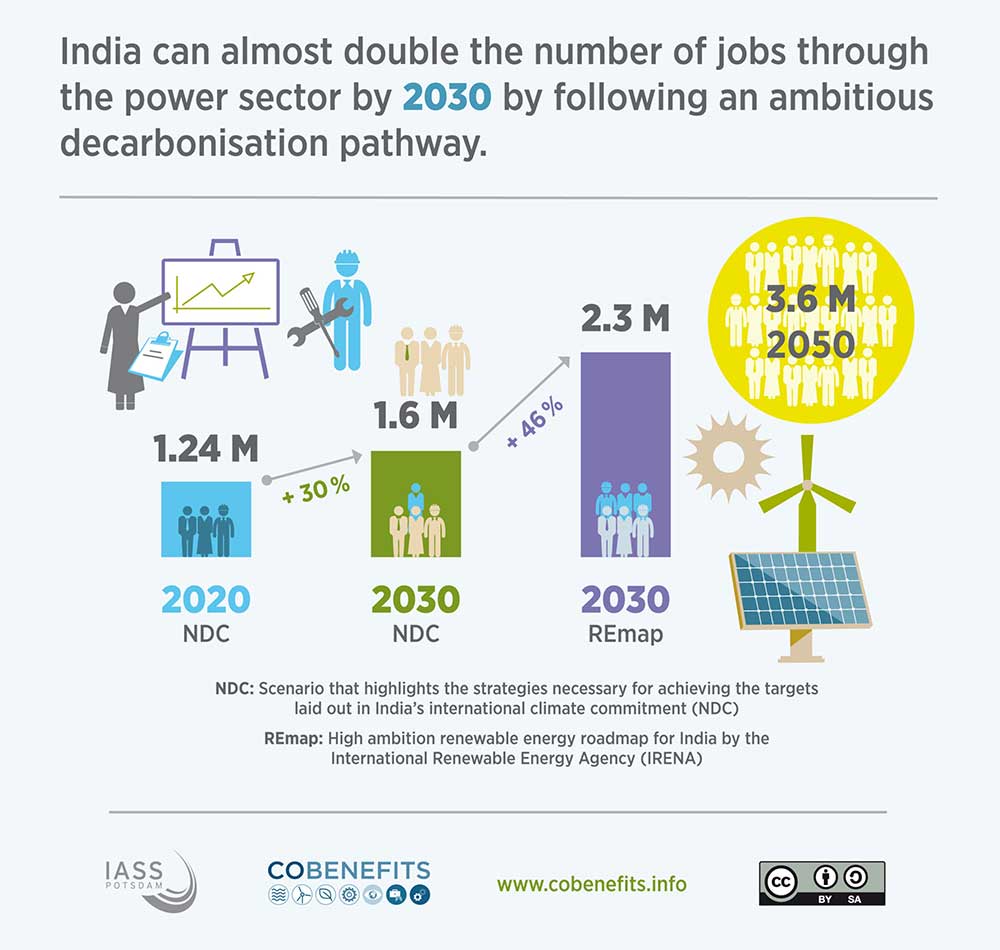
Central Idea:
India aims to balance economic growth and environmental concerns as it strives to become the fastest-growing economy, focusing on decarbonizing the power sector, ensuring development, and securing energy needs. Coal remains crucial, but strategies involve managing existing assets, enhancing coal fleet flexibility, incentivizing energy storage, and promoting domestic manufacturing of renewable energy technologies.
Key Highlights:
- India is actively involved in climate action, reducing fossil fuel subsidies, and planning a threefold increase in renewable power capacity by 2030.
- Coal, despite being essential, is slated to persist until India attains developed country status.
- Strategies include better managing thermal plant outages, increasing coal fleet flexibility, incentivizing energy storage, and promoting domestic clean energy manufacturing.
Key Challenges:
- Balancing economic growth with the imperative to phase down unabated coal.
- Uncertainty in predicting India’s coal reliance due to rising electricity demand.
- Adapting existing coal plants for flexibility in integrating renewable energy.
- Compensating entities for energy storage services and boosting domestic value and job creation in clean energy.
Key Terms:
- COP-28: The 28th Conference of the Parties, relevant to global climate change negotiations.
- Unabated Coal: Coal burning without a reduction in carbon emissions.
- Renewable Power Generation: Electricity from sustainable sources like wind, solar, and hydropower.
- Atmanirbhar: A Hindi term signifying self-reliance, commonly used in promoting domestic manufacturing.
Key Phrases:
- “Decarbonizing the power sector while ensuring economic development and energy security.”
- “Reducing overall fossil fuel subsidies” and “tripling installed renewable power generation capacity by 2030.”
- “Managing thermal plant outages during peak demand periods.”
- “Increasing the flexibility of the existing coal fleet to integrate more renewable energy into the grid.”
- “Indigenizing supply chains for battery storage and renewable energy technologies.”
Key Quotes:
- “India has reduced overall fossil fuel subsidies by 76% between FY14 and FY22.”
- “Coal will remain a vital energy source until India reaches the status of a developed country.”
- “Entities deploying batteries must be compensated for the value they bring to grid operation.”
- “Boosting domestic value and job creation in clean energy will mitigate concerns associated with disruptions in the global supply chain.”
Key Statements:
- “To keep the economy powered while decarbonizing, India must use existing assets better and invest in energy storage capabilities.”
- “Improving availability and utilization of existing plants can mitigate the need for investments in new thermal assets.”
- “Indigenizing supply chains for clean energy will support exports and domestic value additions, mitigating concerns of global supply chain disruptions.”
Key Examples and References:
- “In 2023, coal-based power plants in India witnessed unplanned outages during peak demand days.”
- “The PLI scheme committed funds to solar manufacturing, supporting domestic value additions.”
Key Facts and Data:
- “India reduced overall fossil fuel subsidies by 76% between FY14 and FY22.”
- “India produced coal worth substantial amounts in FY22, providing significant revenues to the government.”
- “The PLI scheme committed funds to solar manufacturing, supporting potential domestic value addition.”
Critical Analysis:
- The article underscores the tension between economic growth and environmental concerns in India’s energy strategy.
- Emphasizing strategies for managing existing assets and enhancing coal fleet flexibility reflects a pragmatic approach to the transition to renewables.
- Highlighting the importance of incentivizing energy storage services and promoting domestic manufacturing underscores the need for a comprehensive and sustainable energy policy.
Way Forward:
- Prioritize transparent assessments of long-term opportunity costs of conventional power sources.
- Focus on affordable electricity for all segments of the economy.
- Build on the success of the PLI scheme to further indigenize supply chains for clean energy.
- Implement policies encouraging flexibility in the coal fleet and compensating entities for energy storage services.
- Continue investing in renewable energy and storage technologies to align with global decarbonization commitments while ensuring energy security.
Get an IAS/IPS ranker as your 1: 1 personal mentor for UPSC 2024
Attend Now
Note4Students
From UPSC perspective, the following things are important :
Prelims level: S.R. Bommai case
Mains level: potential consequences of One Nation, One Election
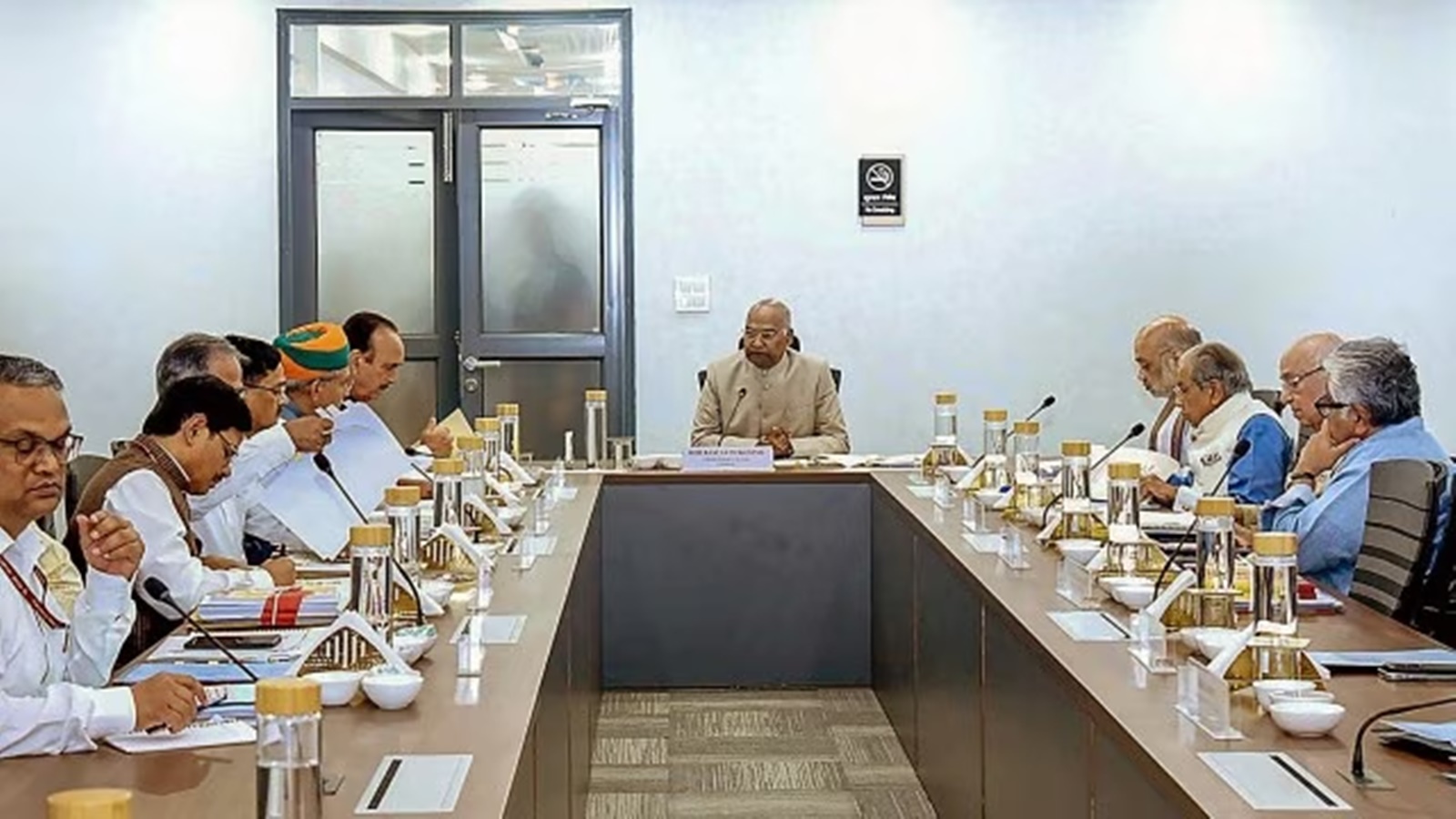
Central Idea:
The article discusses the formation and potential implications of the ‘High Level Committee on One Nation, One Election’ set up by the Union Government in September 2023. It delves into the reasons for and against the concept, focusing on the financial aspects and governance downtime. The author raises legal concerns, particularly regarding the constitutional autonomy of states, linguistic bias in consultations, and the role of the Election Commission. The looming possibility of a constitutional showdown in the Supreme Court is emphasized, drawing parallels with the U.S. case of Baker v. Carr.
Key Highlights:
- Formation of the ‘High Level Committee on One Nation, One Election’ chaired by former President Ramnath Kovind.
- Reasons supporting the concept include reducing election expenses and minimizing governance downtime caused by the Model Code of Conduct.
- Opposition argues that democratic processes, including elections and the Model Code of Conduct, are essential for a functioning democracy.
- Legal concerns raised, citing potential violation of state autonomy and constitutional provisions, particularly as stated in the S.R. Bommai case.
- The linguistic bias in consultations, with the committee’s website available only in English and Hindi, is highlighted.
- The Election Commission’s seemingly passive role and lack of involvement in the process are questioned.
Key Challenges:
- Constitutional and legal concerns regarding the potential alteration of the duration of State Legislative Assemblies.
- Linguistic bias in consultations, limiting the inclusivity of the decision-making process.
- Potential compromise of the Election Commission’s independence and autonomy.
- Balancing financial considerations with the fundamental principles of democracy.
- The challenge of ensuring a fair and unbiased decision-making process amid political interests.
Key Terms and Phrases:
- One Nation, One Election
- High Level Committee
- Model Code of Conduct
- S.R. Bommai case
- Constitutional autonomy
- Governance downtime
- Baker v. Carr moment
- Linguistic bias
- Election Commission
- Constitutional showdown
Key Quotes:
- “The cost of holding free and fair elections… is a price that can never be high.”
- “The introduction of a common election process would necessarily require alteration of the existing duration of a number of State Legislatures.”
- “Similar to demonetisation, when the Reserve Bank of India was kept in the dark, the Election Commission seems to be a silent spectator.”
Key Statements:
- “The Supreme Court would be called upon to determine the ultimate fate of Indian democracy.”
- “The potential alteration of the duration of State Legislatures would be anti-federal and unconstitutional.”
- “The stage is set for a constitutional showdown in the not-too-distant future.”
Key Examples and References:
- Baker v. Carr case in the U.S. as a reference for the potential role of the Supreme Court in a constitutional showdown.
- Comparison with demonetization to highlight concerns about the Election Commission’s apparent lack of involvement.
Key Facts and Data:
- The estimated cost of the 2014 general elections was ₹3,870 crore.
- The High Level Committee’s website is available only in English and Hindi.
Critical Analysis:
The article critically examines the potential consequences of One Nation, One Election, questioning its feasibility and highlighting legal and constitutional concerns. It underscores the importance of democratic processes and the need for the Supreme Court to play a pivotal role in preserving India’s constitutional architecture.
Way Forward:
- Ensure comprehensive and inclusive consultations in multiple languages to address linguistic bias.
- Strengthen the autonomy of the Election Commission and ensure its active participation in decision-making processes.
- Balance financial considerations with the preservation of democratic principles.
- Address legal concerns, particularly those related to state autonomy and constitutional provisions.
- Encourage public discourse to raise awareness and engage citizens in the decision-making process.
Get an IAS/IPS ranker as your 1: 1 personal mentor for UPSC 2024
Attend Now
Note4Students
From UPSC perspective, the following things are important :
Prelims level: 16th Finance Commission
Mains level: inclusion of tax contribution, particularly from Goods and Services Tax (GST) and petroleum consumption, as a significant efficiency indicator in the distribution formula used by Finance Commissions to allocate Union tax revenue among states.

Central Idea:
The article advocates for the inclusion of tax contribution, particularly from Goods and Services Tax (GST) and petroleum consumption, as a significant efficiency indicator in the distribution formula used by Finance Commissions to allocate Union tax revenue among states. The authors argue that these measures provide a fair and stable representation of a state’s economic contribution to the national exchequer.
Key Highlights:
- Finance Commissions play a crucial role in recommending the distribution of Union tax revenues among states.
- Historically, tax contribution had less weight in the distribution formula, but it was completely dropped since the 10th Finance Commission.
- The article contends that tax contribution, especially under the GST regime, is a reliable measure of efficiency, unlike other indicators like tax effort and fiscal discipline.
- The authors propose that GST and petroleum consumption, being stable and indicative of income, should be given a substantial weight in the distribution formula.
Key Challenges:
- Resistance from states that may perceive a potential shift in their shares based on tax contribution.
- The stability of indicators like tax effort and fiscal discipline is questioned, making it challenging to assign them higher weights.
- The need to ensure that the inclusion of tax contribution does not lead to unfair outcomes or discourage states from adopting progressive tax policies.
Key Terms:
- Goods and Services Tax (GST): A unified consumption-based destination tax equally divided between the State and Central governments.
- Tax Contribution: The amount of revenue generated by a state through taxes, considered as an efficiency indicator.
- Finance Commission: A body responsible for recommending the distribution of Union tax revenues among states in India.
Key Phrases:
- “Equity and efficiency in tax revenue transfers.”
- “Tax contribution as an efficiency indicator.”
- “GST and petroleum consumption as fair measures of states’ contributions to the national exchequer.”
Key Quotes:
- “Tax contribution is an efficiency indicator because a State’s level of development and economic structure decides its tax contribution.”
- “GST satisfies the criterion of stability in tax structure, making it an ideal efficiency indicator.”
- “There is a persuasive case for the 16th Finance Commission to debate and include these ratios as a measure of efficiency.”
Key Statements:
- “Since the 10th Finance Commission, tax contribution was dropped from the distribution formula.”
- “GST is a consumption-based destination tax that is equally divided between the State and Central governments.”
- “The Finance Commissions have always favored assigning more than 75% weight to equity indicators.”
Key Examples and References:
- The article references the 15th Finance Commission’s distribution formula, which included tax effort, fiscal discipline, and demographic performance.
- The stability of GST as an efficiency indicator is supported by calculations presented by the authors.
Key Facts:
- The share of personal and corporate income taxes is 64% in Central tax revenue in 2021-22.
- Finance Commissions historically assigned 10% to 20% weight to tax contribution in the distribution formula.
Key Data:
- The weightage of tax effort in the 15th Finance Commission’s distribution formula was 2.5%, with demographic performance receiving a weight of 12.5%.
- The recommended weight for equity indicators in the same formula was 85%.
Critical Analysis:
The article provides a compelling argument for the inclusion of tax contribution in the distribution formula, highlighting the stability and fairness of GST as an efficiency indicator. However, potential challenges such as resistance from states and the need for careful consideration to prevent unintended consequences are acknowledged.
Way Forward:
The authors suggest that the 16th Finance Commission should actively debate and consider including GST and petroleum consumption with a substantial weight in the distribution formula. This, they argue, would better represent states’ contributions to the national exchequer and promote efficiency in resource allocation.
Get an IAS/IPS ranker as your 1: 1 personal mentor for UPSC 2024
Attend Now
Note4Students
From UPSC perspective, the following things are important :
Prelims level: ASER 2023
Mains level: ASER 2023 report underscores the importance of smartphone ownership in shaping deeper access and skills, with a focus on gender disparities
Get an IAS/IPS ranker as your 1: 1 personal mentor for UPSC 2024
Attend Now
Note4Students
From UPSC perspective, the following things are important :
Prelims level: Suez Canal
Mains level: The Yemen conflict has seen an alarming erosion in the shipping industry’s confidence in the Suez Canal
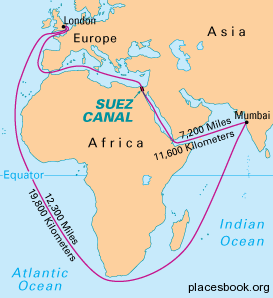
Central Idea:
The article discusses the growing relevance of the India-Middle East-Europe Economic Corridor (IMEC) in light of the Yemen conflict and its impact on the shipping industry’s confidence in the Suez Canal. The author highlights the potential challenges and geopolitical considerations for IMEC, emphasizing its significance for trade, infrastructure, and strategic partnerships.
Key Highlights:
- Shippers are considering alternative routes around Africa due to concerns about the Suez Canal’s reliability amid the Yemen conflict.
- IMEC gains importance as a viable alternative, connecting Saudi Arabia to Israel and potentially transforming trade routes.
- Challenges include geopolitical complexities, opposition from the Arab Street, and alternative proposals by countries like Turkey.
- Existing rail projects in the Middle East, such as Etihad Rail and GCC Railway, align with IMEC’s objectives, targeting ports like Fujairah and Jebel Ali.
- Hydrogen pipelines and containerization through rail and road are proposed components of IMEC, contributing to decarbonization and efficient trade.
Key Challenges:
- Geopolitical hurdles, especially after the Gaza war, may impact the implementation of IMEC.
- Opposition from the Arab Street and concerns about major trade links between Saudi Arabia and Israel pose challenges.
- Turkey’s proposed alternative route and its exclusion from IMEC could complicate regional dynamics.
- The uncertain political landscape and potential changes in U.S. leadership raise questions about the project’s future.
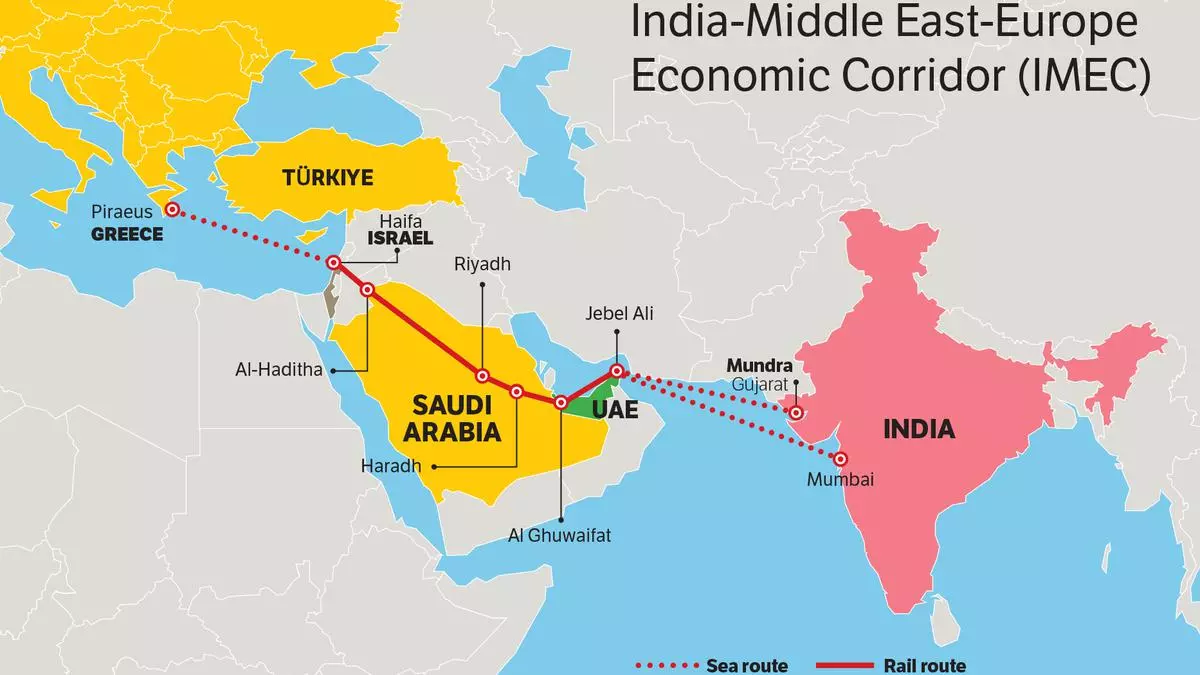
Key Terms/Phrases:
- India-Middle East-Europe Economic Corridor (IMEC).
- Suez Canal.
- Yemen conflict.
- Gaza war.
- Geopolitics.
- Containerization.
- Hydrogen pipelines.
- Rail freight corridors.
- Decarbonization.
- Strategic partnerships.
Key Quotes:
- “The Yemen conflict has seen an alarming erosion in the shipping industry’s confidence in the Suez Canal.”
- “Critics of IMEC say the Arab Street would simply not allow any major trade link between Saudi Arabia and Israel.”
- “Turkey, which has been explicitly left out of IMEC, has already been expressive about its irritation.”
- “IMEC will be the sort of project that would sync with a business-focused Trump if he were to become President of the U.S. again.”
Key Statements:
- The Yemen conflict has raised concerns about the reliability of the Suez Canal, prompting consideration of alternative routes like IMEC.
- Geopolitical challenges and opposition from the Arab Street may impact the realization of IMEC.
- The exclusion of Turkey and uncertainties in U.S. leadership pose additional complexities for the project.
Key Examples and References:
- Etihad Rail and GCC Railway as existing rail projects aligning with IMEC.
- The Gaza war’s impact on the potential meeting for stakeholders to flesh out IMEC details.
- The Adani stake in Haifa port and its potential role in capacity expansion, drawing parallels with the Colombo deepwater container terminal.
Key Facts/Data:
- The India-Middle East-Europe Economic Corridor (IMEC) aims to connect Al Haditha in Saudi to Haifa in Israel.
- Containerization through rail and road in IMEC is highlighted as a significant aspect for India’s trade goals.
- IMEC promises to cut delivery schedules by 40%, emphasizing efficiency in trade.
Critical Analysis:
- The article critically evaluates the geopolitical challenges and potential impediments to the successful implementation of IMEC.
- It discusses the impact of recent conflicts and political developments on the project’s feasibility.
- The inclusion of hydrogen pipelines and containerization as components of IMEC is analyzed in the context of global trends and India’s logistics goals.
Way Forward:
- Advocate for addressing geopolitical hurdles and building consensus among stakeholders for IMEC.
- Consider potential modifications to the project to accommodate geopolitical sensitivities, such as involving Turkey.
- Emphasize the importance of IMEC in the context of global trade, decarbonization, and efficiency, especially with changing political landscapes.
- Ensure that key stakeholders, including the U.S., European nations, and Saudi Arabia, remain committed to the project’s financing and implementation.
- Explore opportunities for collaboration and financing models, drawing from successful templates like the United States International Development Finance Corporation funding for the Colombo deepwater container terminal.
Get an IAS/IPS ranker as your 1: 1 personal mentor for UPSC 2024
Attend Now



.jpg?sfvrsn=ceb0ec8f_8)

